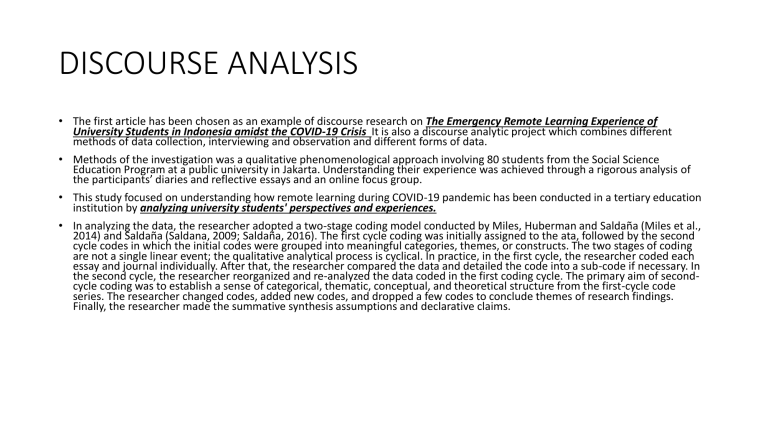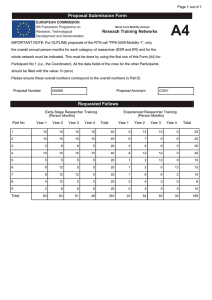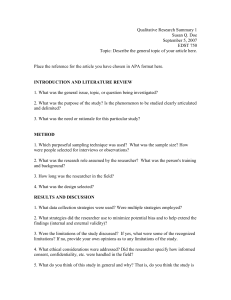
DISCOURSE ANALYSIS • The first article has been chosen as an example of discourse research on The Emergency Remote Learning Experience of University Students in Indonesia amidst the COVID-19 Crisis It is also a discourse analytic project which combines different methods of data collection, interviewing and observation and different forms of data. • Methods of the investigation was a qualitative phenomenological approach involving 80 students from the Social Science Education Program at a public university in Jakarta. Understanding their experience was achieved through a rigorous analysis of the participants’ diaries and reflective essays and an online focus group. • This study focused on understanding how remote learning during COVID-19 pandemic has been conducted in a tertiary education institution by analyzing university students' perspectives and experiences. • In analyzing the data, the researcher adopted a two-stage coding model conducted by Miles, Huberman and Saldaña (Miles et al., 2014) and Saldaña (Saldana, 2009; Saldaña, 2016). The first cycle coding was initially assigned to the ata, followed by the second cycle codes in which the initial codes were grouped into meaningful categories, themes, or constructs. The two stages of coding are not a single linear event; the qualitative analytical process is cyclical. In practice, in the first cycle, the researcher coded each essay and journal individually. After that, the researcher compared the data and detailed the code into a sub-code if necessary. In the second cycle, the researcher reorganized and re-analyzed the data coded in the first coding cycle. The primary aim of secondcycle coding was to establish a sense of categorical, thematic, conceptual, and theoretical structure from the first-cycle code series. The researcher changed codes, added new codes, and dropped a few codes to conclude themes of research findings. Finally, the researcher made the summative synthesis assumptions and declarative claims.




